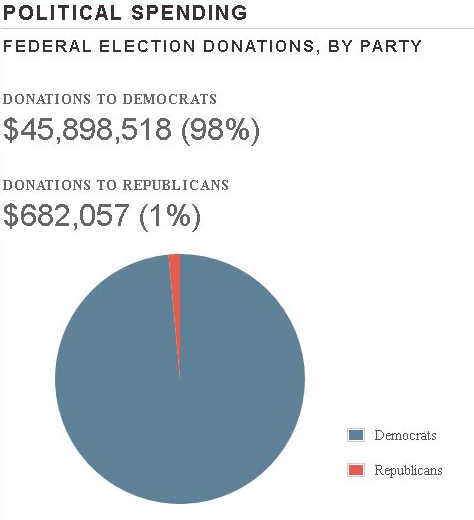
Some people think of unions as a force for good. Perhaps they were in the past, but a little reading of economics shows how they actually produce very bad results for workers. In addition to that, unions are actively trying to influence the outcome of elections in 2020, using the money collected from their members. Fortunately, there have been two great developments recently that limit their power.
Here’s a recent story from Just the News:
Leaders of several public and private sector unions are threatening to organize walkouts this fall for teachers, truck drivers and service workers in an effort to protest police killings.
“The status quo — of police killing Black people, of armed white nationalists killing demonstrators, of millions sick and increasingly desperate — is clearly unjust, and it cannot continue,” said a statement issued over the weekend by various arms of the American Federation of State, County and Municipal Employees, the Service Employees International Union, and National Education Association.
[…]The union leaders also called for defunding police departments and universal health care.
You can see their progressive convictions coming out in how they distribute the money they collect from their members.
The Washington Examiner reports:
Organized labor has given more than $1.3 billion to Democratic Party organizations and liberal nonprofit and activist groups since 2010, while 1 percent went to conservative groups or causes, according to a survey of federal data.
The giving is starkly different from the beliefs of most rank-and-file union members, many of whom lean Republican.
Having said all of that, there were two pieces of good news about labor unions that I think we should celebrate during Labor Day.
First of all, there was a very good decision to allow teachers to opt out of having to pay union dues in all 50 states. Second, a large number of states have enacted right-to-work laws, which allow employees in union-dominated jobs to be able to work without being forced to join a union.
This article explains both:
While every public sector employee across the country now enjoys right to work protections under the First Amendment as a result of the 2018 National Right to Work Legal Defense Foundation-won Janus v. AFSCME Supreme Court decision, private sector workers in the 23 states that have yet to pass a right to work law can lose their job for refusing to tender dues or fees to a union.
Right to work protects each worker’s freedom of choice, but the advantages of right to work hardly stop there. Enshrining workplace freedom also brings significant economic benefits to the 27 states that have passed right to work laws.
Between 2009 and 2019, right to work states saw the total number of people employed grow by 16.9%. That’s nearly double the 9.6% gain in non-right to work states, according to an analysis of federal government statistics compiled by the National Institute for Labor Relations Research, or NILRR.
The study also found that, after adjusting for the cost of living, the mean after-tax household income in right to work states was about $4,300 higher than for households in forced-unionism states in 2018, the most recent year for which household income data is available.
The connection between right to work laws and better economic performance is not a surprise. Business experts consistently rank the presence of right to work laws as one of the most important factors companies consider when deciding where to expand or relocate their plants and facilities, where they will create new jobs and new opportunities.
Take the manufacturing sector, for example. The NILRR analysis revealed that employment in the manufacturing sector increased by 10% in right to work states from 2009 to 2019, over three times the 2.9% gain forced-unionism states saw over that same period.
Right to work laws clearly make economic sense, but protecting employee freedom has always been their central feature.
I really liked the Janus decision and right-to-work laws, because I don’t think that conservative workers should be forced to join a union in order to earn a living. The unions should not get access to worker money for free – unions should have to earn their worker’s money by providing value. And the worker should decide whether there is value there, or not.
You can see a full breakdown of union contributions by political affiliation for 2019-2020 here at Open Secrets.


